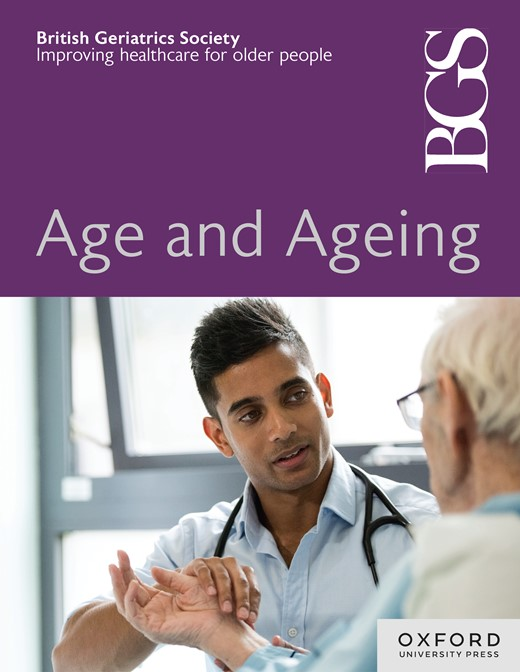无症状主动脉瘤手术或非手术治疗后的术前临床特征和 12 个月疗效
IF 7.1
2区 医学
Q1 GERIATRICS & GERONTOLOGY
引用次数: 0
摘要
设计 在一家三级主动脉手术转诊中心进行的一项观察性队列研究,旨在描述接受腹主动脉瘤修复术评估的患者的内外科特征,并研究其与 12 个月预后的关系。方法 转诊至主动脉多学科会议(MDM)讨论的主动脉瘤患者。数据通过前瞻性维护的临床数据库收集,包括动脉瘤特征、患者人口统计学特征、合并疾病、老年综合症(包括体弱)、管理决策和 12 个月死亡率(动脉瘤相关死亡率和全因死亡率,包括死因)。对手术组和非手术组进行统计比较。结果 621 名患者转诊至主动脉 MDM;292 名患者被列入手术治疗名单,141 名患者继续接受监护,138 名患者接受非手术治疗。与手术组相比,非手术组的 12 个月死亡率更高(41% vs 7%,P = <0.001)。在非手术组中,16 名患者(29%)在 12 个月内死于动脉瘤破裂,39 名患者(71%)死于其他医疗原因。与手术组相比,非手术治疗的患者年龄更大,更有可能患有心脏和呼吸系统疾病,更有可能体弱多病、认知障碍和功能受限。结论 本研究表明,术前老年综合征和合并症的增加导致共同决定对无症状主动脉瘤进行非手术治疗。非手术组 12 个月的死亡率较高,其中大部分死亡是由于动脉瘤破裂以外的原因。这些研究结果表明,有必要在术前进行全面的老年病学评估,然后进行多专科讨论并共同做出决定。本文章由计算机程序翻译,如有差异,请以英文原文为准。
Preoperative clinical characteristics and 12-month outcomes following operative or non-operative management of asymptomatic aortic aneurysms
Design An observational cohort study conducted at a tertiary referral center for aortic surgery to describe the medical and surgical characteristics of patients assessed for abdominal aortic aneurysm repair and examine associations with 12-month outcome. Methods Patients with aortic aneurysms referred for discussion at the aortic multidisciplinary meeting (MDM). Data were collected via a prospectively maintained clinical database and included aneurysm characteristics, patient demographics, co-morbidities, geriatric syndromes, including frailty, management decision and 12-month mortality, both aneurysm-related and all-cause including cause of death. The operative and non-operative groups were compared statistically. Results 621 patients referred to aortic MDM; 292 patients listed for operative management, 141 patients continued on surveillance, 138 patients for non-operative management. There was a higher 12-month mortality rate in the non-operative group compared to the operative group (41% vs 7%, P = <0.001). In the non-operative group, 16 patients (29%) died of aneurysm rupture within 12 months, with 39 patients (71%) dying from other medical causes. Non-operatively managed patients were older, more likely to have cardiac and respiratory disease and more likely to be living with frailty, cognitive impairment and functional limitation, compared to the operative group. Conclusion This study shows that preoperative geriatric syndromes and increased comorbidity lead to shared decision to non-operatively manage asymptomatic aortic aneurysms. Twelve-month mortality is higher in the non-operative group with the majority of deaths occurring due to cause other than aneurysm rupture. These findings support the need for preoperative comprehensive geriatric assessment followed by multispecialty discussion and shared decision making.
求助全文
通过发布文献求助,成功后即可免费获取论文全文。
去求助
来源期刊

Age and ageing
医学-老年医学
CiteScore
9.20
自引率
6.00%
发文量
796
审稿时长
4-8 weeks
期刊介绍:
Age and Ageing is an international journal publishing refereed original articles and commissioned reviews on geriatric medicine and gerontology. Its range includes research on ageing and clinical, epidemiological, and psychological aspects of later life.
 求助内容:
求助内容: 应助结果提醒方式:
应助结果提醒方式:


